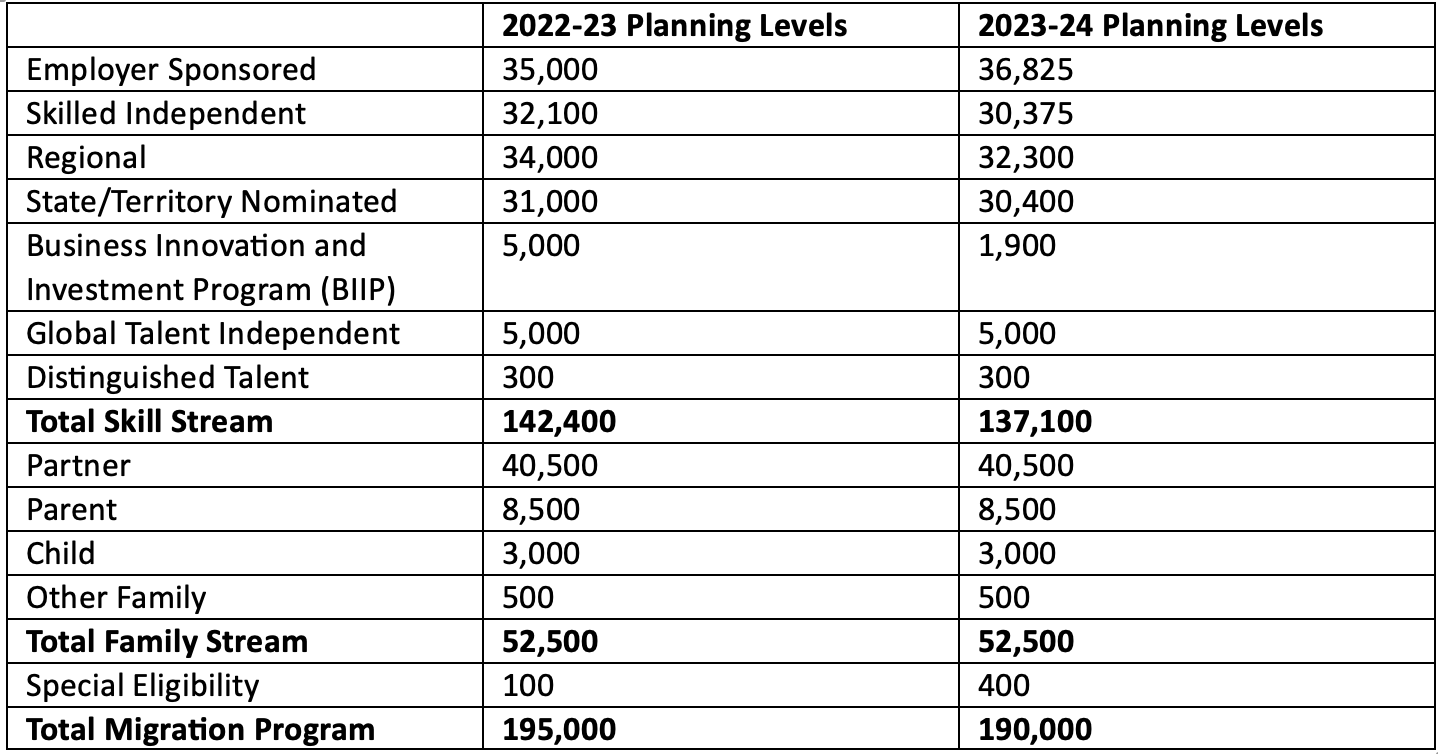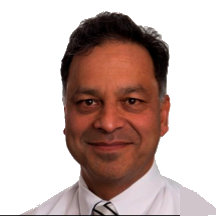What should we make of the 2023-24 Migration Program planning levels?
May 12, 2023
The Government has announced the 2023-24 migration program will be set at 190,000 places in headline terms a 5,000 place reduction on the 2022-23 migration program.
Note the permanent migration program counts visas granted irrespective of whether the person is already in Australia or not.
It is very different to net migration which counts long-term arrivals minus long-term departures irrespective of visa category or citizenship (eg movement of Australian citizens is counted in net migration). In most years, the migration program contributes only a relatively small portion to net migration as a large part of the program is delivered through visa grants to onshore applicants.
Two points to note about the change in the migration program headline number for 2023-24.
Firstly, the 3,000 places for the new permanent residence Pacific Engagement Visa (PEV), to start from 1 July 2023 and run by the Department of Foreign Affairs and Trade (DFAT), will not be part of Australias permanent migration program. The rationale for this bizarre treatment is not clear other than the fact DFAT has always considered itself separate from and superior to every other part of the Public Service. The treatment certainly runs counter to a key recommendation of the Parkinson Review that policy and design of all visas should be run by a single agency to ensure policy and administrative coherence.
Secondly, because NZ citizens will from 1 July 2023 be able to access Australian citizenship directly if they have been living in Australia for four years or more, they will cease applying for permanent residence visas. This largely takes us back to the situation prior to 2001, when very few NZ citizens applied for permanent residence visas. In recent years between 8,000 to 10,000 permanent visa places were being taken up by NZ citizens, particularly visa the Skilled Independent category. These places will now be freed up for citizens from other nations. This effectively expands the skill stream of the migration program to a level higher than in 2022-23.
The planning levels for the 2023-24 migration program are in Table 1.
Table 1: Migration Program Planning Levels

The increase in places for employer sponsored visas represents good policy if it can be achieved noting that a large portion of these visas are taken by people already in Australia on temporary employer sponsored visas.
The Government has announced that the minimum salary for temporary employer sponsored visas will be increased to around $70,000 (just under the starting salary for nurses and teachers) after being left at around $53,000 for almost ten years. The Parkinson Review recommends that employer obligations for employer sponsored visas be more strongly monitored and enforced.
These are good policy changes as are the changes to make the pathway to employer sponsored permanent visas for these temporary entrants more open.
The small reduction in places for the Skilled Independent category will, due to the NZ citizen changes, actually be an increase. The challenge will be to find enough applicants who meet current criteria given Minister ONeils indication that she intends to tighten selection criteria.
The small reductions in the regional and state/territory nominated categories, noting most of the regional category is also subject to a state/territory nomination, will be heavily dependent on the labour market in each state and the volume of applications with qualifications in occupations in shortage in each state/territory. Most state/territory governments struggled to fill their allocations in 2022-23 and had to make major changes to selection criteria.
The large reduction in the planning level for BIIP does not reflect a lack of applications. The backlog for these is large. The reduction reflects concerns that this category is not delivering positive budget or economic outcomes.
Maintenance of places for the Global Talent Independent visa is worrying given the highly subjective nature of criteria for this category. It is a category that is at very high risk of corruption.
It is good DHA continues to indicate that the Partner visa category will be managed on a demand driven basis as required by law. During former Minister Duttons time, this was not the case.
A key overall question will be whether these planning levels can continue to be delivered if the labour market weakens significantly, the Parkinson Review recommendations to tighten the visa system are adopted and recommendations of the Nixon Review on visa integrity are fully implemented.
That would, of course, also have a downward impact on net migration to levels well below those recently forecast by Treasury.

